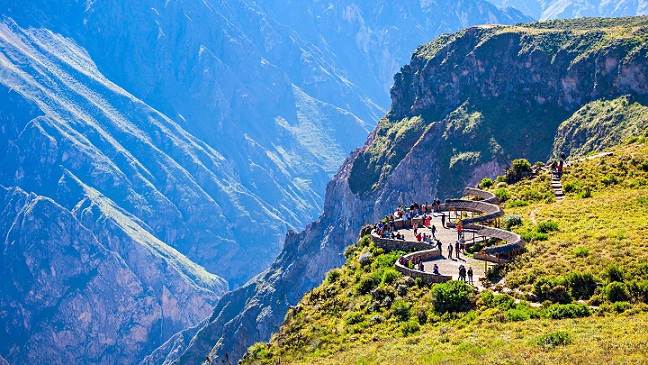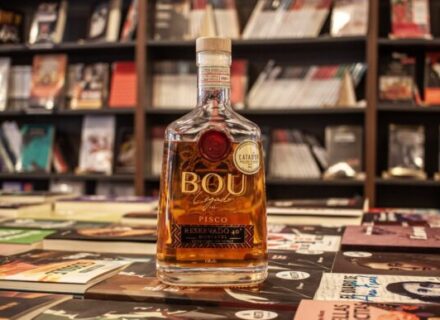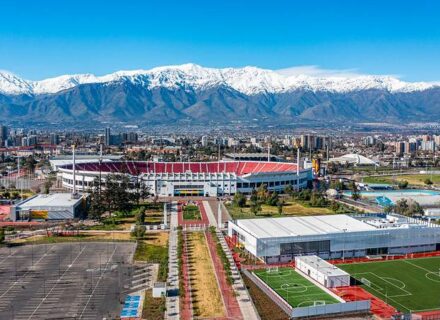Start your adventure in Colca Canyon’s largest town and capital: Chivay. Located at the head of the canyon, Chivay has some stunning panoramic views, as well as a bus station and options for lodging and dining. It’s also within close reach of La Calera Thermal Hotsprings (15 minutes), where you can treat yourself to a relaxing afternoon either prior to or after your arduous trek up Colca Canyon. The waters of these five thermal baths stem from the volcano Coltalluni, but flow through a cooling system before reaching their final destination. They are thought to be highly medicinal for their high calcium, zinc, and iron content.
Cruz Del Condor and Cabanaconde
Watch the mighty Andean condor in flight at the Cruz del Condor, located in between Pinchollo and Cabanaconde. Highly revered by the Incas, the silver and black-winged Andean condor will command your attention as it effortlessly soars around the lookout point. The best hours to catch these condors circling the lookout point are between 7 and 10 in the morning. Just a few minutes further down the road, the town of Cabanaconde has a bus station, as well as lodging and dining facilities for tourists.
Colca Canyon Trek
Zigzag your day down the world’s second deepest canyon back up on a trek through Colca Canyon. Along the way, you’ll get a spectacular view of the rugged natural beauty of the surrounding mountain ranges.
On day one you’ll descend from peak to valley, passing the local villages of San Juan the Chuccho, Cosnira, and Malawa en route to the coveted Oasis the Sangalle, where a refreshing outdoor pool, a hearty dinner, and hammocks await.
Depending on your itinerary, you’ll either spend one or two nights inside the canyon. On your final day, you’ll complete a three-hour trek back up the canyon. If you’re not up for the climb, don’t worry; you can rent a mule at the bottom of the canyon to haul you back to the top.
Salinas y Aguada Blanca National Reservation
Meet the undomesticated cousin of the llama and the alpaca – the vicuña – at the Salinas y Aguada Blanca National Reservation in the Colca Canyon. The vicuña is the national animal of Peru, and is highly coveted for producing soft wool from its fine fibers, which are used to make warm scarves, sweaters, socks, and hats.
On the reserve, it is also possible to see parihuanas (flamingoes) and tarucas (small deer). Most agency-guided visits to the Colca Canyon include a brief stop on the route back to Arequipa to take pictures of these rare wildlife species.
Colca Canyon Travel Essentials
If you’re planning to do the Colca Canyon trek, make sure you bring a refillable water bottle and some snacks with high protein content – such as nuts, apples, and bananas – to help you refuel during your trek.
You’ll need lightweight fabrics, sunglasses, a hat, and sunscreen for day trekking, and a heavy sweater and pants for the chilly Andean nights.
Consider bringing a hiking stick and a flashlight for the early morning part of the hike. Non-trekkers should dress in layers to remain comfortable in the fluctuating temperatures and have sunscreen, sunglasses, and plenty of water on-hand.
Bring your bathing suit to enjoy a relaxing afternoon at the La Calera thermal baths.
Admission Fee
There is an admission fee to enter the entire Colca Canyon region, which is used to protect and preserve the local environment. Some of our organised tours into the Colca Canyon will include your admission fee.



